Top 10 spirits brands on social media
With the demand for engaging content and the potential for virality higher than ever, spirits brands must be agile in their social media strategies – especially as the popularity and policies of specific platforms evolve.
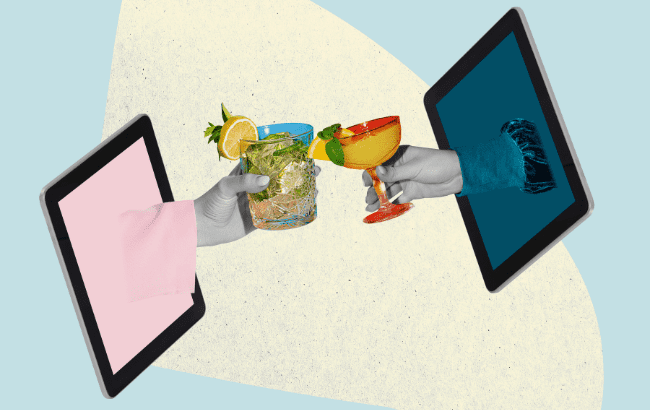
In the last year, the social media landscape has seen more changes than your Facebook profile probably saw cringey status updates in 2010. From new platform launches to business acquisitions, there’s been a lot for spirits brands to socially navigate over the last 12 months, as this year’s report discovers.
In 2022’s Brand Champions report, we explored how TikTok has become the drinks industry’s White Whale – a platform full of prime, ready-to-be-marketed-to users forcibly left untapped due to the platform’s ban on all advertisements promoting alcoholic beverages, alcohol subscription services, alcohol-making kits and alcohol-sponsored events. Not much has changed on this front over the past year. However, in autumn we were given a powerful demonstration of the platform’s astonishing power to influence consumer behaviour, as a video of an interview with House of the Dragon actors Emma D’Arcy and Olivia Cooke resulted in a 501% increase in searches for the Negroni Sbagliato, otherwise known as “a Negroni… with Prosecco in it”.
Campari America saw a direct correlation between the viral TikTok clip and a spike in Campari searches and sales, and the firm said its marketing and customer trade teams jumped on the trend quickly to put out more content.
Platform comeback
However, for brands that haven’t had the same luck as Campari with TikTok, there are still the four other core platforms to be utilised. In the last year, some brands have even seen value in looking to platforms that have been somewhat overlooked in recent years. This includes Pinterest, which recently announced a platform partnership with Amazon – a move that “will open up a whole new level of direct-to-consumer sales for spirits brands,” says Tom Harvey, co-founder of spirits marketing agency YesMore.
Brands can also look to the platform to take note of trends and get ahead of the curve. In its Pinterest Predicts report for 2023, the visual discovery engine unveiled that searches for ‘fancy non-alcoholic drinks’ had increased by 220%, while ‘creative cocktails presentation’ searches had soared by 555%. The report also revealed that Gen X (the demographic cohort following Baby Boomers and preceding Millennials) is driving demand for non-alcoholic and low-ABV serves, and cocktails, and so going forward, brands may benefit from giving the platform more attention from both a marketing and R&D perspective.
While some platforms have been invaluable over the last year, one in particular is on the verge of becoming obsolete for spirits brands’ social media managers. Many brands have seen little benefit in ‘microblogging’ platform Twitter since it was acquired by billionaire Elon Musk last year.
“YesMore Agency has found that many spirits brands seem to have either abandoned Twitter entirely, or let their accounts mothball – most likely due to their attention pivoting to other less content-hungry platforms,” explains Harvey. “In 2018 we conducted a study, which showed 42% of spirits brands hadn’t posted on their account in the last month.”
The Spirits Business’ research this year found much the same, with brands such as Jack Daniel’s and Malibu barely touching the platform at all in 2023. Another contributing factor to this may be Twitter’s “knee-jerk and unconsidered approach to monetising the platform” with the removal of its blue verification ticks.
“In a world where people are searching for more authenticity, the removal of genuinely verified real accounts is quite honestly a monumental fuck-up from Twitter that could actually be quite dangerous,” Harvey notes. “We’re already seeing phishing scams from fake accounts imitating brands with ‘official’ blue ticks, scamming people who think they’re competition winners.”
Now trending
In terms of content trends on social media over the last 12 months, short-form video has continued to boom, Harvey says. “The impact of this on spirits brands is that they’ve had to scramble to produce enough volume of content to feed these hungry social channels, while also being comfortable enough to reduce production values to the point that the content will actually resonate. This has been easier for the independent spirits brands who don’t have years of ingrained processes and multi-tiered sign-off from people that don’t ‘get’ how to be genuinely sociable on social media.”
While the overly cautious use of social media is a particular issue for bigger brands, the 10 featured in our heroes list have managed to navigate this tricky assault course of corporate management to produce content that has genuinely engaged consumers over the past 12 months, and no brand has done this more so than our 2023 Social Media Hero, Baileys.
Despite being a brand that shines brightest during the festive period, the Diageo-owned Irish cream liqueur brand’s content has remained as constant as the North Star through all 12 months of the year, churning out engaging, provocative and shareable recipe visuals across all of its consumer-based platforms.
Adding to this: “Baileys has invested in what appears to be both a smart and creative way to drive awareness and consumption of the brand in summer months – a partnership with Eurovision,” Harvey notes. The brand has been an outspoken advocate for the LBGTQIA+ community, as well as a strong supporter of Ukraine over the last year. “They certainly aren’t sitting on the fence here. They are non-corporate and it’s going to do them well.”
And do them well it has.
The following Social Media Heroes list has been compiled as part of The Spirits Business‘s Brand Champions 2023 report. As such, it includes only brands that sell more than one million nine-litre cases annually.
These figures are based on research conducted in April and May 2023, and so the majority of brands included have most likely grown their followers and fans since.
10. Johnnie Walker
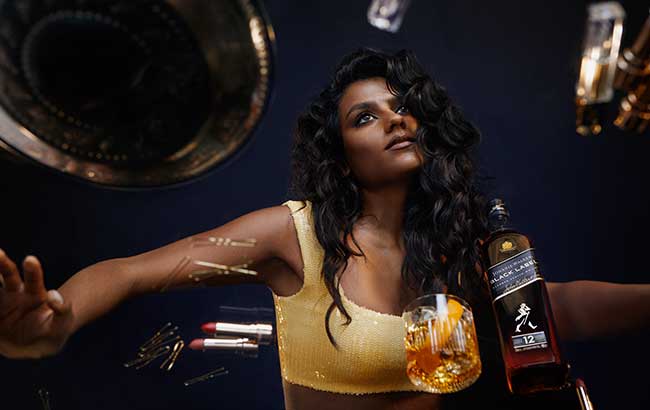
Facebook fans: 14,596,509 | Twitter followers: 14,596,509 | Instagram followers: 505,876 | Total: 15,139,471
Frequency 8 | Engagement 7 | Consistency 8 | Creativity 5 | Overall Score 28
Last year’s Social Media Hero Johnnie Walker doesn’t appear to have kept the momentum going as well over the last year, sticking to a very obviously formulaic social media plan that has meant standing out among its competitors hasn’t quite worked.
That’s not to say that the Diageo-owned Scotch whisky brand hasn’t generated attractive and engaging content on its platforms, of course. The creative, elegant imagery has remained consistent, keeping a strong sense of brand across the board, but being so stringent with that branding has meant that it has all appeared quite repetitive. We would argue that its marketing successes have been seen in other areas over the past year, such as its out-of-home (OOH) activations and television ads.
9. Hennessy
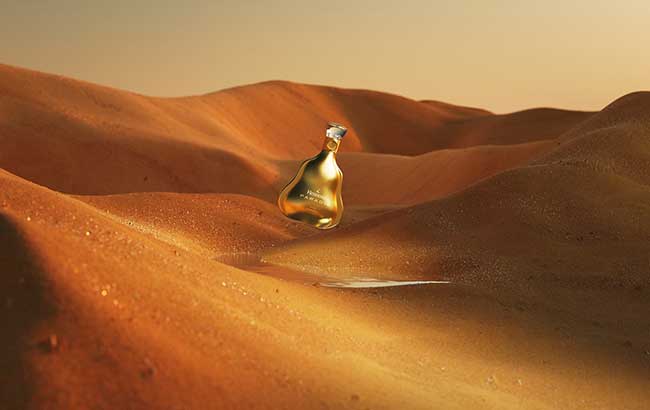
Facebook fans: 3,694,362 | Twitter followers: 76,714 | Instagram followers: 773,596 | Total: 4,544,672
Frequency 7 | Engagement 5 | Consistency 8 | Creativity 8 | Overall Score 28
The brand with the highest Instagram following of the top 10, Hennessy Cognac has curated a colourful mix of professional imagery, spanning recipes and behind-the-scenes shoots of campaigns over the last year, however engagement is lower than expected for a brand with such a high following.
Hennessy has utilised multiple collaborations with artists, all of which have been demonstrated via stories and grid posts, both static and reel-based, with a Black-skewing celebrity focus, including partnerships with Alicia Keys and various sporting players.
This is continued onto Twitter, where content has been skewed to a US-based audience, and in the main excludes any audience that doesn’t enjoy basketball or isn’t based in New York City. For a global brand this seems shortsighted, but maybe its an easier way for Hennessy to communicate directly with its audience?
8. Smirnoff
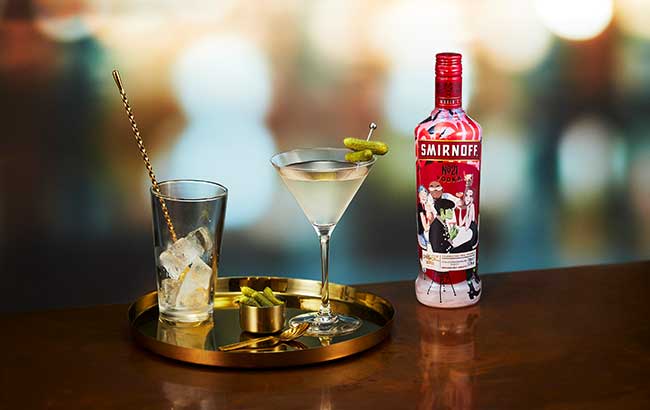
Facebook fans: 13,610,290 | Twitter followers: 13,240 | Instagram followers: 244,009 | Total: 13,867,539
Frequency 7 | Engagement 7 | Consistency 7.5 | Creativity 8 | Overall Score 29.5
Smirnoff is consistently one of the world’s biggest-selling spirits, and when looking at its approach to social media marketing, it isn’t difficult to see why.
On Facebook, the Diageo-owned brand utilises multiple languages to reach a wider audience rather than having multiple accounts, however posting on the platform isn’t as regular (a few posts a month) and mostly just ad-style posts.
Meanwhile on Instagram, the content is a lot brighter and more brand specific. The brand has roped in the help of celebrities such as TV host Trevor Noah, and made plentiful nods to cultural pinpoints such as April Fool’s Day and the Super Bowl, as well as marking seasonal celebrations throughout the year.
Its use of Twitter isn’t frequent, but it is in-keeping with social media brand aesthetic.
7. Jack Daniel’s
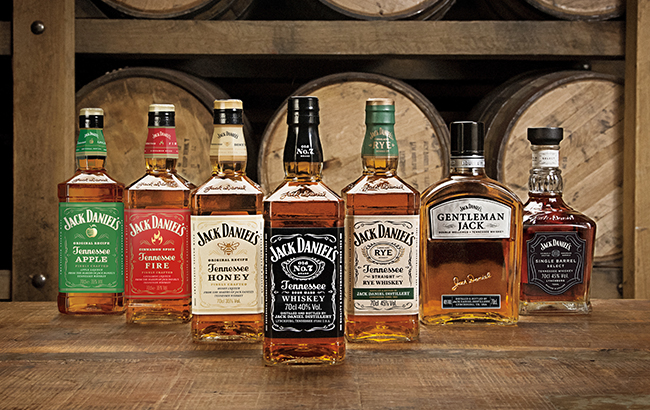
Facebook fans: 18,000,000| Twitter followers: 200,041 | Instagram followers: 681,039 | Total: 18,881,080
Frequency 8 | Engagement 7.5 | Consistency 8 | Creativity 7 | Overall Score 30.5
Collectively among all of Jack Daniel’s 36 verified Instagram accounts, the brand boasts 1.8 million followers, with its US account – the main focus of this report – its most followed.
The content is mostly male leaning, but the brand has made the effort to represent females, with a broad mix of ethnicities, too. The brand’s identity and history is strongly demonstrated throughout, and this overflows onto its other social media platforms.
Jack Daniel’s has made sure to use each platform to promote its entire portfolio of whiskey and ready-to-drink serves, with the use of colourful and creative imagery, and it has also managed to inject personality into the content by featuring real people associated with the company.
6. Hornitos

Facebook fans: 1,200,891 | Twitter followers: 13,160 | Instagram followers: 27,678 | Total: 1,241,729
Frequency 8 | Engagement 8 | Consistency 7.5 | Creativity 7.5 | Overall Score 31
Despite having one of the lower followings in our top 10, Hornitos’ high engagement has placed it higher than some of the brands with more than 100,000 followers on each platform.
There is no mistaking by looking at its platforms that green is the key brand colour, as it is consistent across posts, making for a very colourful and attractive grid.
Content is a mix of recipes and portfolio promotion, with post regularity on Facebook not as consistent as Instagram, with selective repetitions of what has been used on the other Meta-owned platform.
The brand’s use of Twitter has focused on consistent brand placement, and while not much information about the brand or its products is provided, it is quippy enough to catch attention, which is what is required on such a fast-paced scrolling platform.
5. Bacardí
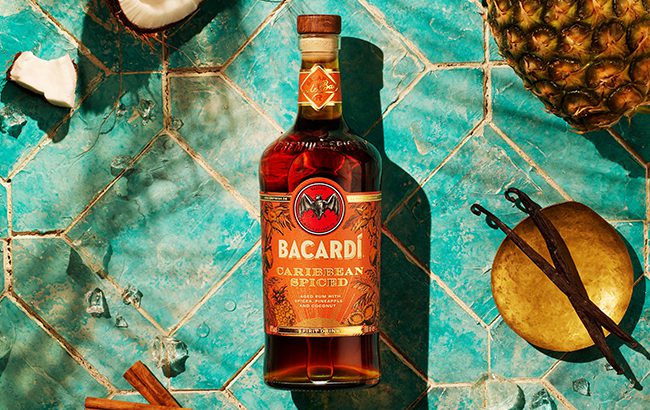
Facebook fans: 9,011,040 | Twitter followers: 99,347 | Instagram followers: 235,707 | Total:
Frequency 8 | Engagement 7 | Consistency 9 | Creativity 8 | Overall Score 32
If there were ever a brand that utilises social media to bring itself to life, its Bacardí.
With the clever use of imagery and recipes, the rum brand has been consistent on both Facebook and Instagram over the last year, letting Twitter fall by the way side a little, though any tweets posted have been created to drive engagement, such as polls and recipes.
While most of the content shared on Instagram has simply been replicated for Facebook, it appears to have paid off, as the consistency has provided a higher engagement rate than many of the brands in our list.
From a grid perspective, the style is pleasing and style-forward, and the brand has represented a good mix of ethnicities and genders across all of its visuals in the promotion of its entire rum portfolio.
4. Jameson
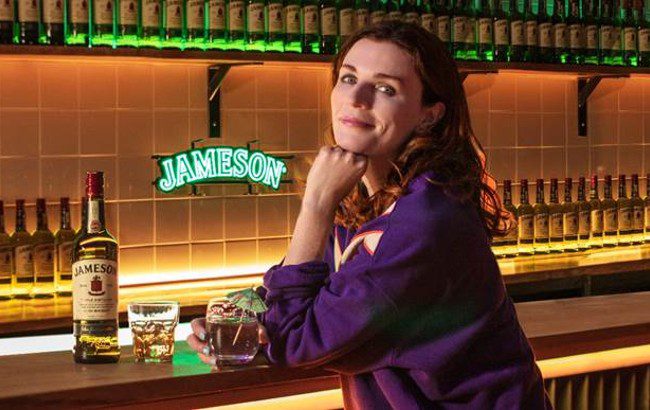
Facebook fans: 4,137,550 | Twitter followers: 43,397 | Instagram followers: 204,937 | Total: 4,385,884
Frequency 8 | Engagement 7 | Consistency 8.5 | Creativity 9 | Overall Score 32.5
Pernod Ricard-owned Irish whiskey Jameson has used a mix of curated, high-end visuals alongside hand-made creatives to create convivial, jovial content – the perfect strategy for making the brand appear like a drink for ‘feel-good’ occasions.
Across all platforms, the brand colours are consistently represented, and Jameson brand ambassador Aisling Bea features throughout.
Jameson has been consistent with its posting without being too repetitive, and has leant into some of the more viral social media trends to remain current and relatable. Its Facebook account is UK-focused, utilising reels for content, while on Twitter, Jameson has posted engaging questions and interesting comments – nothing too strategy focused, but good for keeping brand awareness up.
3. Malibu
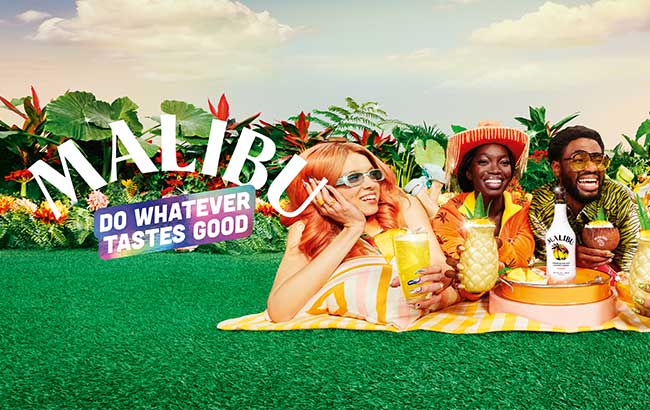
Facebook fans: 2,394,290 | Twitter followers: 47,115 | Instagram followers: 88,049 | Total:
Frequency 7.5 | Engagement 8.5 | Consistency 8.5 | Creativity 9 | Overall Score 33.5
Pernod Ricard’s Malibu has embraced the ‘hun’ culture of the internet by creating sharable memes and amusing content that embodies the rum liqueur brand’s fun-loving ethos.
The aesthetic is colourful and bright, with a lot of attractive recipes and clever brand placement. On the brand’s UK Instagram account, Malibu has enlisted the help of reality stars such as The Only Way Is Essex star Gemma Collins and members of the Love Island cohort to reinstate the fun-time feel of the brand, demonstrating that it doesn’t take itself too seriously.
On Facebook, the UK market is the focus, with recipes and the bright use of colour continued, however frequency of posting is a lot lower. The brand hasn’t utilised Twitter since November 2022, and prior to that, posting was semi-regular but less creative. Perhaps because Malibu’s sense of fun doesn’t translate as well on this platform.
2. Jägermeister
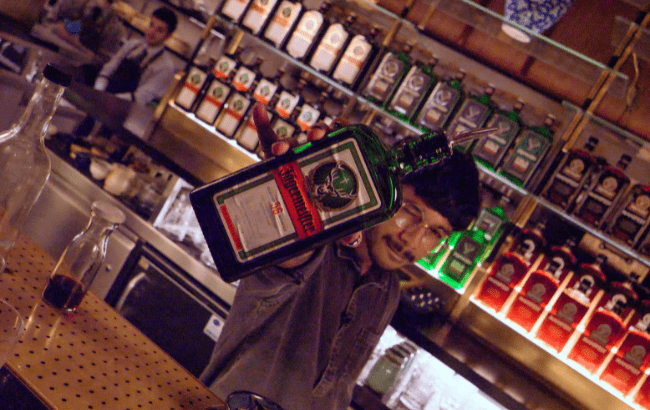
Facebook fans: 6,162,939 | Twitter followers: 110,095 | Instagram followers: 440,793 | Total: 6,713,827
Frequency 8 | Engagement 8.5 | Consistency 9 | Creativity 8.5 | Overall Score 34
Much like Jack Daniel’s, Jägermeister’s following has been bumped up by the creation of regional accounts on Instagram – 42 in total – which has amounted to a total of 1.45 million followers across the board.
On all of them, the brand has kept its cool, edgy aesthetic at the fore, and the persona of Jägermeister is very much reflected in its posts on both Instagram and Facebook.
The herbal liqueur brand has posted a lot of content that utilises social media trends, making it sharable and relatable to its following. Meanwhile the brand messaging has been consistent across the board, reiterating the importance of the right temperature of consumption. Brand colours have kept consistent throughout, and Jägermeister has made a generic but consistent use of Twitter, all of which was enough to land it in the number two spot on our list.
1. Baileys
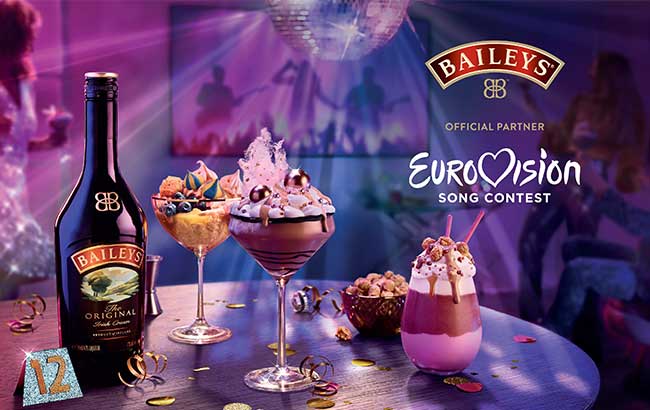
Facebook fans: 5,176,628 | Twitter followers: 9,964 | Instagram followers: 197,843 | Total: 5,384,435
Frequency 9 | Engagement 9.5 | Consistency 9 | Creativity 9 | Overall Score 36.5
Our Social Media Hero 2023, Baileys, is one of the brands that has consistently and effectively used all social media platforms examined in our report, making it a worthy winner of this year’s title.
On Twitter, the Diageo-owned brand has consistently posted and conversed with its followers, sharing recipes and imagery that has driven high engagement, injecting plenty of personality into its posts and keeping rapport with its consumer base.
Baileys has leaned into the notion that it offers a product created for indulgence, and pushes the ‘treat yourself’ messaging of the brand across all platforms, which clearly resonates.
The brand’s engagement on Facebook is high, with a lot of positive feedback on the recipes which span both food and cocktails. Creativity of these recipes has also inspired sharing and interaction.
As mentioned in our report above, Baileys created plenty of engaging content as part of its sponsorship of this year’s Eurovision Song Contest, taking the opportunity to keep the brand relevant long after its festive seasonal peak. On Instagram, the brand pushed and utilised the partnership to create fun recipe content. Again, engagement on this platform is the highest of any other brands in the list – and the recipe imagery is very in-keeping with the platform’s aesthetic-led MO.
Related news
Top 10 spirits launches in June
